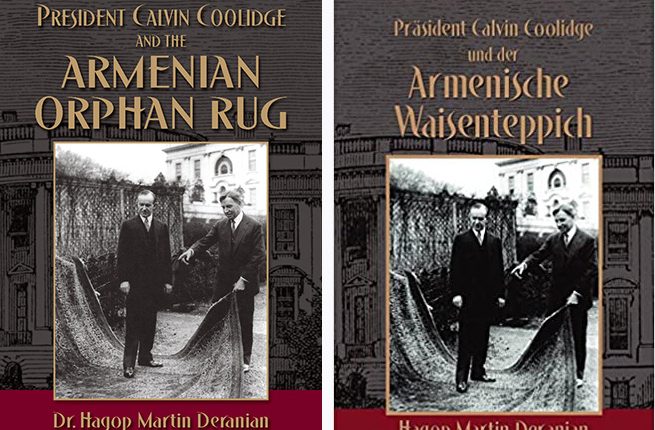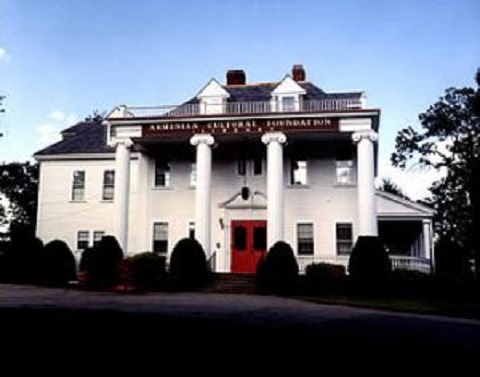“The beautiful rug woven by the [Armenian] children in the [Ghazir] orphanage in the Lebanon has been received. This, their expression of gratitude for what we have been able to do in this country for their aid, is accepted by me as a token of their goodwill to the people of the United States. . . The rug has a place of honor in the White House, where it will be a daily symbol of good-will on earth.” These words of President Calvin Coolidge on December 4, 1925, were made in response to Dr. John H. Finley, Vice-Chairman of the Near East Relief Executive Committee, who presented the rug for the Armenian orphans who “have tied into it the gratitude of tens of thousands of children to you and to America. And what they have tied into it will never be untied. . . It is sent to adorn the dearest of our temples, the White House of our President.”
Coinciding with the release of the book, a planned December 16, 2013 Smithsonian Institution exhibit featuring the rug, organized in conjunction with the Armenian Cultural Foundation and the Armenian Rug Society, was abruptly cancelled when the White House, reversing an earlier affirmative decision, refused to lend the iconic symbol of American and Armenian shared heritage to the museum. Following almost a year-long protest by the Armenian American community activists, other diaspora communities and pressure by the U.S. legislators, the Orphan Rug was made available for display as a part of an exhibit in the White House visiting Center, a year later on November 14, 2014.
In light of the great demand and interest internationally, the Armenian Cultural Foundation has welcomed the publication of the President Calvin Coolidge and the Armenian Orphan Rug in other languages. A German edition of the book, Präsident Calvin Coolidge und der Armenische Waisenteppich, translated by Ortrun Cramer, was published by Hans Schiler publishing house in 2014. This year the Nairi Publishing house in Tehran published two Armenian and Farsi editions of the book under the auspices of the Armenian Architects and Engineers Association of Iran. The Armenian edition Nakhagah Kalvin Kolije yev hay vorperi gorge is translated by Armenouhi Badalian and the Farsi edition, Reyis jomhur kalvin koulij va farshe yatimane armani by Karine Harutounian-Dror. Both titles, available through Nairi Publishing house, are exact reproductions of the English edition, including the original preface as well as all the illustrations, annotations and bibliography. The Armenian Cultural Foundation congratulates and commends the above efforts to make this small and yet important book on the post-Armenian Genocide episode pertaining to the Armenian orphans in the Near East to the public.



























































